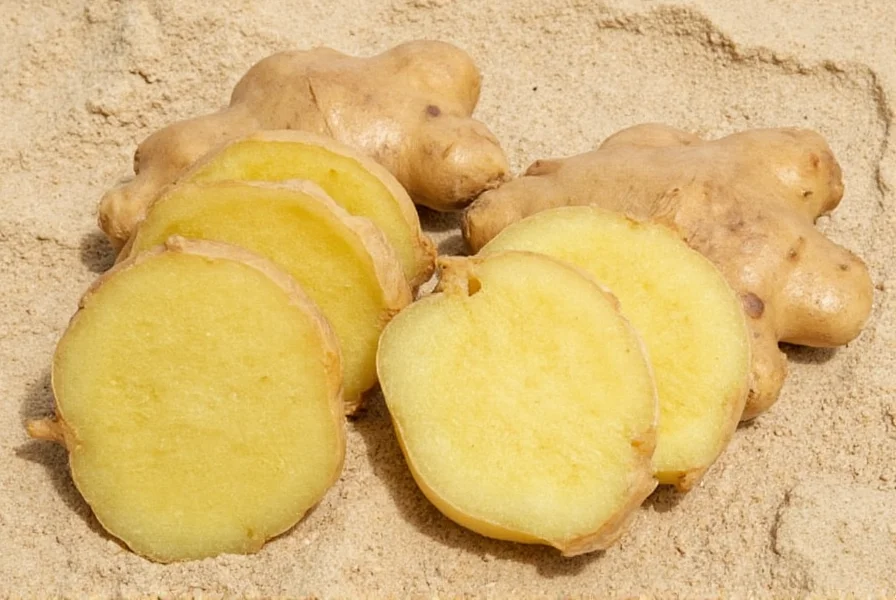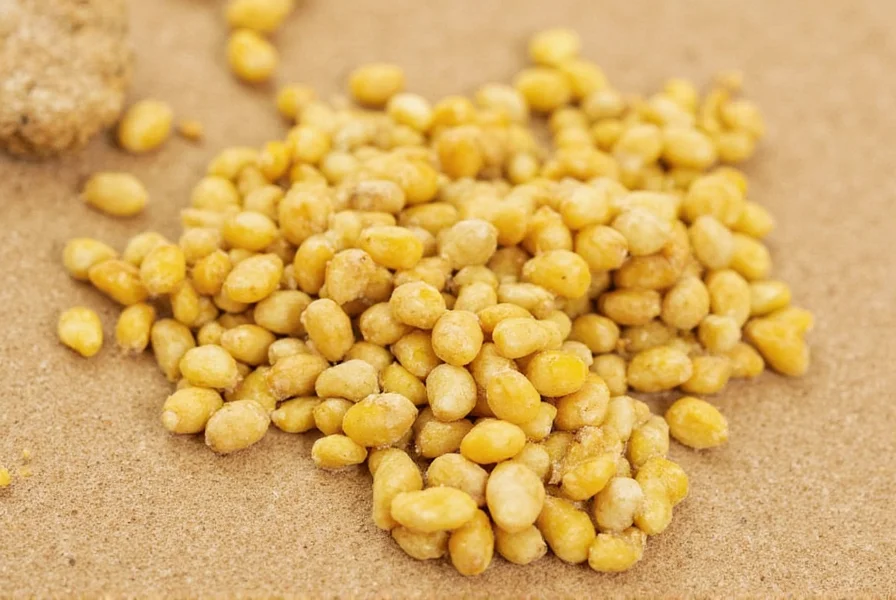Sand ginger stands as a remarkable botanical with growing scientific interest due to its unique chemical composition and traditional applications. Unlike common ginger which belongs to the Zingiber genus, sand ginger is part of the Kaempferia genus within the Zingiberaceae family, explaining its distinctive characteristics and properties. This perennial herb grows to approximately 30-45 cm in height with distinctive heart-shaped leaves and produces small white or pale purple flowers during its growing season.
Botanical Characteristics and Identification
The most distinguishing feature of sand ginger lies beneath the soil—the rhizomes appear dark brown to nearly black on the exterior with a deep purple interior, earning it the alternative name "black ginger." These rhizomes grow horizontally in sandy soils, which explains the common name "sand ginger." The plant's scientific name, Kaempferia pandurata, references both its discoverer and the violin-shaped (pandurate) leaves that characterize the species.
When identifying authentic sand ginger, look for these key characteristics:
| Feature | Sand Ginger (Kaempferia pandurata) | Common Ginger (Zingiber officinale) |
|---|---|---|
| Rhizome Color | Dark brown/black exterior, deep purple interior | Tan/brown exterior, pale yellow interior |
| Leaf Shape | Heart-shaped with pointed tip | Long, narrow, lanceolate |
| Flower Appearance | Small white/pale purple with yellow center | Larger, showy yellow/green flowers |
| Primary Bioactive Compounds | Panduratin A, isopanduratin A | Gingerols, shogaols |
Geographical Distribution and Cultivation
Sand ginger naturally thrives in the tropical forests of Thailand, Malaysia, Indonesia, and other Southeast Asian regions where it grows in well-drained sandy soils under partial shade. Traditional cultivation methods involve planting rhizome sections during the rainy season, with harvest occurring after 8-12 months when the leaves begin to yellow. Unlike common ginger which can grow in various soil types, sand ginger specifically requires sandy, well-draining substrates to prevent rhizome rot—a characteristic that further explains its common name.
Commercial cultivation has expanded in recent years due to growing interest in its potential health benefits, though authentic sand ginger remains less widely available than regular ginger in Western markets. When seeking genuine sand ginger, look for specialty Asian markets or reputable herbal suppliers who can verify the botanical source.

Traditional Medicinal Applications
For centuries, traditional medicine systems across Southeast Asia have utilized sand ginger for various therapeutic purposes. Thai traditional medicine practitioners have employed it as a digestive aid, anti-inflammatory agent, and treatment for respiratory conditions. The rhizomes are typically sliced, dried, and prepared as decoctions or incorporated into medicinal formulations.
Traditional applications of sand ginger include:
- Alleviating digestive discomfort and improving appetite
- Reducing inflammation in joints and muscles
- Supporting respiratory health during cold seasons
- Topical applications for skin conditions in some regional practices
- Traditional postpartum recovery formulations in certain cultures
Modern Research on Health Properties
Contemporary scientific research has begun investigating the traditional claims surrounding sand ginger, with particular focus on its unique bioactive compounds. Studies have identified panduratin A and isopanduratin A as key constituents with promising biological activities. Research published in the Journal of Ethnopharmacology has documented sand ginger's potential antioxidant and anti-inflammatory effects, while other investigations suggest possible metabolic benefits.
Current research directions include examining sand ginger's potential effects on:
- Oxidative stress reduction through enhanced antioxidant enzyme activity
- Inflammatory pathway modulation, particularly relevant for joint health
- Metabolic function and glucose metabolism
- Microbial properties against certain pathogens
Researchers emphasize that while preliminary findings show promise, more comprehensive human studies are needed before definitive health claims can be made about sand ginger's therapeutic applications. The current body of research represents early-stage investigation rather than established medical evidence.
Culinary Uses and Preparation Methods
In Southeast Asian cuisine, sand ginger contributes a distinctive flavor profile that differs from common ginger. Its taste is often described as more earthy and less pungent than regular ginger, with subtle citrus notes. Traditional culinary applications include:
- Thai kaeng som (sour curry) where it adds depth without overwhelming heat
- Malaysian rendang preparations for complex flavor development
- Traditional herbal tonics and fermented preparations
- As a component in certain regional spice pastes
When preparing sand ginger for culinary use, follow these guidelines:
- Peel the dark outer skin using a spoon or vegetable peeler
- Slice thinly for quick cooking applications
- For medicinal preparations, drying and powdering preserves active compounds
- Store fresh rhizomes in a cool, dark place for up to two weeks
- Dried sand ginger maintains potency for 6-12 months when properly stored

Safety Considerations and Potential Interactions
Sand ginger appears generally safe when consumed in typical culinary amounts. However, as with any botanical with potential bioactive properties, certain precautions warrant consideration:
- Individuals taking blood-thinning medications should consult healthcare providers before consuming therapeutic amounts
- Pregnant or breastfeeding women should exercise caution due to limited research on safety in these populations
- Those with gallbladder issues should consult medical professionals before regular consumption
- Discontinue use at least two weeks before scheduled surgery due to potential effects on blood clotting
No serious adverse effects have been documented in traditional use or preliminary research, but comprehensive safety data from large-scale human trials remains limited. As with any herbal preparation, starting with small amounts to assess individual tolerance represents a prudent approach.
Where to Find Authentic Sand Ginger
Locating genuine sand ginger requires some diligence, as it's less common than regular ginger in most markets. Your best options include:
- Specialty Asian grocery stores, particularly those focusing on Thai or Southeast Asian products
- Reputable online herbal suppliers with verifiable sourcing practices
- Farmers' markets in regions with significant Southeast Asian communities
- Botanical gardens or specialty plant nurseries for cultivation purposes
When purchasing, verify authenticity by examining the rhizome's distinctive dark exterior and purple interior. Be cautious of products simply labeled "black ginger" as this term sometimes refers to aged common ginger rather than true Kaempferia pandurata.
Conclusion
Sand ginger represents a fascinating botanical with deep roots in Southeast Asian traditional medicine and cuisine. Its distinctive purple rhizomes contain unique compounds that differentiate it significantly from common ginger, both botanically and in potential applications. While traditional uses span digestive support, inflammation management, and culinary enhancement, modern research continues to investigate these applications with scientific rigor. As interest in this remarkable plant grows, maintaining awareness of its proper identification, appropriate usage, and current research limitations remains essential for those exploring its potential benefits.
What is the difference between sand ginger and regular ginger?
Sand ginger (Kaempferia pandurata) belongs to a different botanical genus than regular ginger (Zingiber officinale). Sand ginger rhizomes have a dark brown to black exterior with deep purple interior, while regular ginger has tan exterior with pale yellow interior. They contain different bioactive compounds—sand ginger features panduratin A while regular ginger contains gingerols. Their flavors also differ, with sand ginger being less pungent and more earthy.
Can sand ginger help with inflammation?
Preliminary research suggests sand ginger contains compounds like panduratin A that may have anti-inflammatory properties. Laboratory studies have shown potential for modulating inflammatory pathways, but comprehensive human clinical trials are still needed. Traditional medicine systems have used it for inflammatory conditions, but current evidence remains at the preliminary research stage rather than established medical treatment.
How do I identify authentic sand ginger?
Authentic sand ginger (Kaempferia pandurata) has distinctive dark brown to nearly black exterior skin with a deep purple interior when cut open. The rhizomes are typically smaller and more compact than regular ginger. Be cautious of products simply labeled "black ginger" as this may refer to aged common ginger rather than true sand ginger. The most reliable identification comes from examining the purple interior color and verifying the botanical name.
Where can I buy genuine sand ginger?
Authentic sand ginger is most reliably found at specialty Asian grocery stores, particularly those focusing on Thai or Southeast Asian products. Reputable online herbal suppliers with verifiable sourcing can also provide genuine products. When purchasing, look for the distinctive dark exterior and purple interior. Be cautious of unusually low prices or products lacking botanical identification, as mislabeling sometimes occurs in the marketplace.
Is sand ginger safe to consume daily?
Sand ginger appears safe when consumed in typical culinary amounts. However, therapeutic daily consumption warrants more caution. Limited research exists on long-term daily use at medicinal doses. Individuals with specific health conditions, particularly those affecting blood clotting or taking certain medications, should consult healthcare providers before regular therapeutic use. As with any botanical, moderation and awareness of individual tolerance represent prudent approaches.











 浙公网安备
33010002000092号
浙公网安备
33010002000092号 浙B2-20120091-4
浙B2-20120091-4